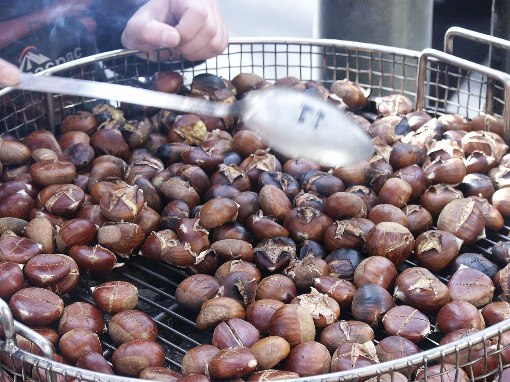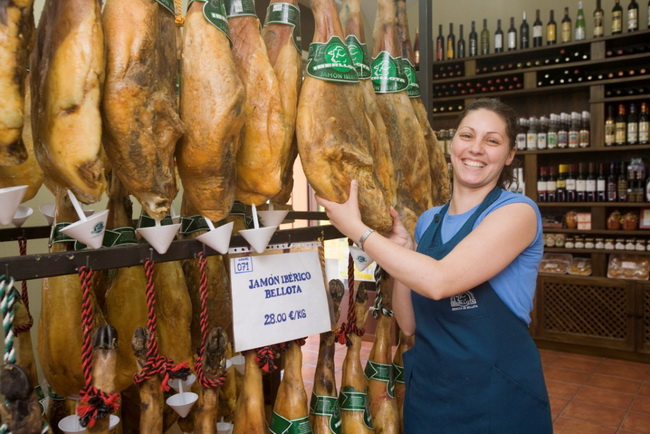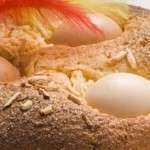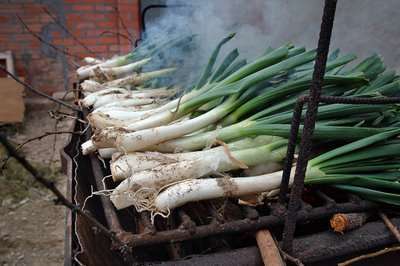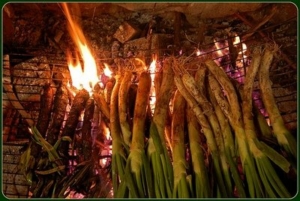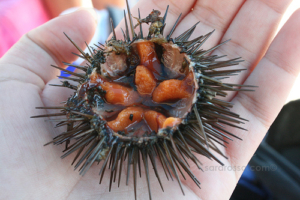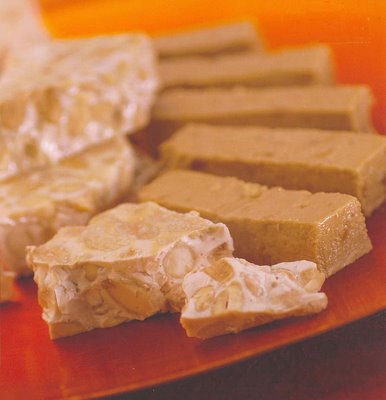It´s almost time for chestnuts, sweet chestnuts – glistening mahogany as their shells open on the ground and one of the most inviting fruits of late Autumn. Who can resist the permeating aroma of chestnuts as they roast on the open fire or coals of the street seller, who, himself is swathed in woollens against the fierce chill and winds of winter. As he scoops his globules of delight into pyramid shaped bags and passes you the hand warming mass, your mouth waters at the prospect of such a delicious feast. Read more
Tag Archive for: spanish food
Saffron is the most precious and expensive spice in the world and is often said to be worth its weight in gold. The Saffron filaments, or threads, are actually the dried stigmas of the saffron flower, “Crocus Sativus Linneaus”. Each flower contains only three stigmas and these threads must be picked from each flower by hand; more than 75,000 of these flowers are needed to produce just one pound of Saffron filaments, making it
If there’s one thing you’ll learn for certain as you browse cafes, fine dining establishments and the plates of all the natives around you, it’s that Spaniards are proud of their ham, or jamón iberico. With one taste of this rich specialty, you’ll already know why, but a little background on what makes it so special will further astound you. On our Barcelona Culinary Tours you will be able to taste the famous Joselito, the best Spanish Iberian Ham, but here are some basics facts
Traditional Spanish Recipe-Scrambled egg with Mushrooms
At our autumn guided Boqueria market visits we stop at the famous Llorenç Pelras stall to buy rovellons. Here is a traditional Spanish recipe for a very simple and tasteful dish for breakfast or a starter. The proportion below serves two for breakfast, and the side-by-side presentation features the mushrooms as a separate flavor. The traditional Spanish recipe can also be assembled as scrambled eggs or an omelet. With more cream or half-and-half and doubling the recipe, it easily converts to a quiche filling or a frittata. Read more
Spain is known world wide for its excellent quality olive oil and is actually the greatest producer in the world, for its oil quality is unsurpassable.
Spanish olive oil contains no additives, colorants, flavorings or any other foreign matter and is obtained by decantation, centrifusion and filtration, its quality depends on several factors, Read more
TRADITOINAL SPANISH MONA DE PASCUA….EASTER CAKE
Ingredients for Traditional Spanish Mona de Pascua
For the Sponge
- 4 eggs
- 150g of Sugar
- 150g of flour
- 20g of ground almonds
- 5g of yeast
- 2 beaten egg whites
- 50g of butter
For the Filling
- 300g of Peach Jam (or any other rich tasting fruit jam)
To Garnish
- 250g of dark chocolate
- 125g of butter
Instructions for traditional Spanish Mona de Pascua
1) Beat the eggs and sugar together in a bowl
2) Mix the flour and yeast together in a separate bowl
3) Gradually add the mixture of flour and yeast through a sieve (to avoid creating any lumps) to the egg and sugar mixture
4) Stir constantly while adding the ground almonds
5) Whisk the egg whites in a separate bowl until they form peaks
6) Once they are half whisked, add 50g of sugar, once whisked blend in with the flour and egg mixture
7) Turn the final mix out into a greased and flour sprinkled mould
8 ) Place in the oven at 180 ºC for about 40-45 minutes
9) Remove the sponge, allow to cool, cut in half and spread with the jam filling
10) Finally, stir and melt the chocolate and butter together, cover the sponge with the chocolate and allow to cool. Why not try adding your own final touch, some decorated or coloured eggs? A few feathers? A few miniature chicks? Or a little rabbit?
If you would like to learn to cook like a professional then our private Gourmet Cooking Tours introduce you to the best of Spanish cuisine as well as a range of culinary delights such as Michelin starred dining, exquisite wine tastings and authentic gourmet tapas tours.
Calçots were discovered by a Catalan farmer called Xat de Benaiges at the end of the 19th century. The cultivation of Calçots is a complicated process that starts at the end of the year when onion seeds are planted. Once the onion has germinated and begun to grow, it is pulled out of the ground and stored for a time before being replanted. It is only buried half way into the earth and as it grows higher, it is necessary to repack earth around the newly grown part of the vegetable. When harvested it has the long leek like appearance that most people living here know and love.
TRADITIONAL SPANISH SEA URCHIN RISOTTO
Serves 4
1 cup diced yellow onion, 1/8” dice
1/4 cup olive oil
Salt
Freshly crushed white peppercorns
1 cup Arborio rice
4 – 5 cups chicken stock
1/2 cup white wine
1/2 – 3/4 cup fresh sea urchin roe, carefully cleaned of all spines and grit, dividedç
METHOD FOR TRADITIONAL SPANISH SEA URCHIN RISOTTO
Sauté the onions, lightly seasoned with salt and freshly crushed white peppercorns, in olive oil until they soften and start to turn golden. Stir in the rice to completely coat it with oil and cook, stirring, for 1 minute. Add the wine, and stir until it’s almost absorbed. Add 1/2 cup stock and cook over moderate heat, stirring constantly, until the Read more
Paracentrotus lividus goes by many names in Catalonia . In Spanish it´s erizo de mar (sea hedgehog – an old meaning in English of urchin is the same). The Catalans also call the zoological species an eriço but the animal to be scoured out and eaten is a garota. In the villages along the coast, sea urchin eating reveries are held every year known as orisades, garoinades or garotades, organised originally by fishermen, hence the simplicity in their preparation. Outside the Empordan region there is little about sea urchins in the Spanish Mediterranean, however as Barcelona’s middle class began to buy up huge swathes of one of the most beautiful corners of Spain, they muscled in on the custom, and it is now relatively easy – at a price- to get hold of a few urchins in La Boqueria in Barcelona. Garotes feature strongly and strangely on the winter menus of the trendiest Catalan restaurants these days. Gastronomes here wax lyrical about their delights. The famous Spanish Journalist and Writer, Julio Cambó said ‘there is no seafood that better synthesises the sea so perfectly as the urchin‘ and . ‘an extract of the sea, a breath of a storm, an essence of tempests“. They’re also eaten in Asturias where I believe they use them to make a fine omelette, and urchin caviar is becoming increasingly popular. Read more
INGREDIENTS FOR TRADITIONAL SPANISH CHRISTMAS TURRON
• 1 cup orange blossom honey
• 1 cup finely ground almonds
• 2 egg yolks
• 1 teaspoon ground cinnamon (optional)
• 1/8 teaspoon lemon zest (optional)
• 1 egg whites, beaten stiff
METHOD FOR TRADITIONAL SPANISH CHRISTMAS TURRON
1. Pour the honey into a saucepan and warm over medium-low heat to 140 degrees F (60 degrees C). Stir the almonds into the warm honey and remove from heat. Mix the egg yolks, cinnamon, and lemon zest into the almonds. Fold the egg whites into the mixture.
2. Line a dish with parchment paper. Pour the mixture onto the parchment paper and smooth to a 1/2-inch layer. Place a sheet of parchment paper atop the mixture and then place a cutting board over the paper; place a few items on top of the cutting board to give it some weight.
3. Once your traditional Spanish turron has been left to dry for 3 days-cut into 1-inch squares to serve.
If you would like to learn to cook traditional and authentic Spanish recipes with a professional Spanish chef, our private Cooking Tours in Northern Spain introduce you to the best of Spanish cuisine as well as a range of culinary delights such as Michelin starred dining, exquisite wine tastings and authentic gourmet tapas tours.
[/av_textblock]
About
Gourmand Breaks is a Spanish Registered and Fully Bonded Tour Operator GC 1627, inscribed in the Commercial Register of Girona on 17 of May 1996, VAT number ESB61124814

